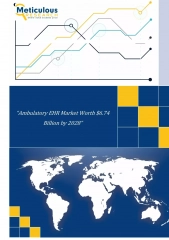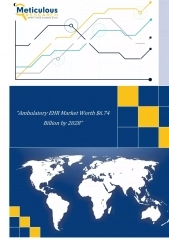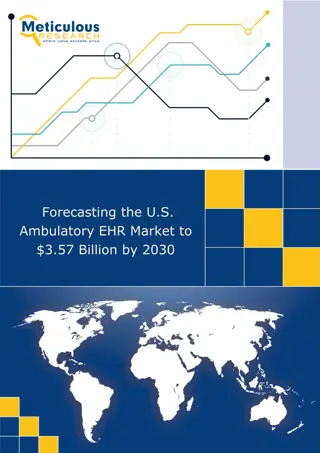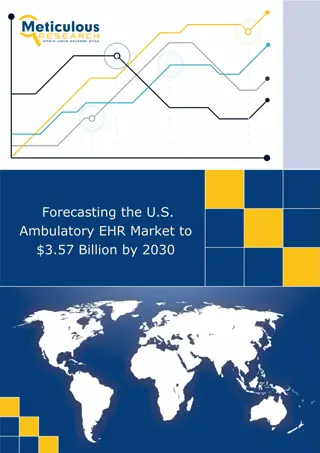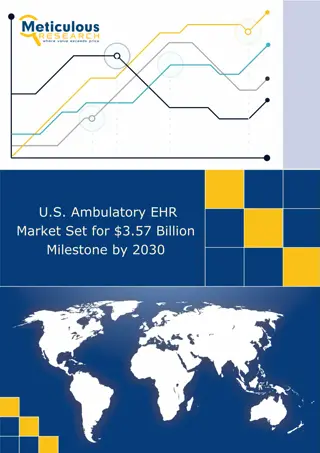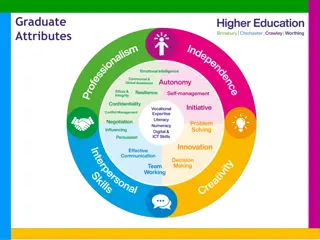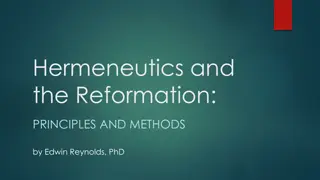
Unlocking Indonesia's Fisheries Sector Potential
Discover how Indonesia's fisheries sector can significantly boost national GDP and address income distribution issues. Explore the untapped marine resources, compare contributions to GDP from various countries, and delve into strategies for sustainable growth through targeted policies and investments.
Download Presentation

Please find below an Image/Link to download the presentation.
The content on the website is provided AS IS for your information and personal use only. It may not be sold, licensed, or shared on other websites without obtaining consent from the author. If you encounter any issues during the download, it is possible that the publisher has removed the file from their server.
You are allowed to download the files provided on this website for personal or commercial use, subject to the condition that they are used lawfully. All files are the property of their respective owners.
The content on the website is provided AS IS for your information and personal use only. It may not be sold, licensed, or shared on other websites without obtaining consent from the author.
E N D
Presentation Transcript
1 Fisheries for Indonesian Quality Growth Haryanto Directorate Macro Planning and Statistical Analysis KEMEN PPN/BAPPENAS -- Direktorat Perencanaan Makro dan Analisis Statistik --
2 Outline 1 Background of Study 2 Research Methodology 3 Result Analysis and Discussion 4 Conclusion and Policy Recommendation -- Direktorat Perencanaan Makro dan Analisis Statistik --
3 1 Background of Study -- Direktorat Perencanaan Makro dan Analisis Statistik --
4 Indonesia's Marine Potential has not been Explored Properly Contribution of Fisheries Sector to GDP (%) Indonesia has yet to utilize the potential of abundant maritime resource as the main sector in sustaining the increase of national GDP. 2.28 2.27 2.27 2.27 2.26 2.24 2.24 2.23 Meanwhile, other countries, such as: Iceland, Norway, Japan, China and South Korea, in which the resource potential are considered less than that of Indonesia, have successfully developed the fishery sector as the sector which significantly contribute to their national GDP. 2.22 2.22 2.22 2.21 2.21 2.21 2.20 2.20 2.20 2.20 2.20 2.19 2.19 2.19 2.19 2.18 2.16 2.14 2000 2001 2002 2003 2004 2005 2006 2007 2008 2009 2010 2011 2012 2013 2014 2015 2016 2017 Source: BPS, 2017 -- Direktorat Perencanaan Makro dan Analisis Statistik --
The Contribution of the Fisheries Sector to the GDP of Various Countries (2008) Contribution of Fisheries to GDP Area (KM2) GDP Coastline (KM ) Country Population (Mil USD) Iceland 339,747.00 103,000.00 17.73 4,800.00 60% Norway 5,320,045.00 323,802.00 364.50 25,148.00 25% South Korea 46,290,000.00 99,274.00 1,411.00 2,413.00 37% China 1,263,000,000.00 9,597,000.00 4,598.00 14,500.00 48% Japan 128,100,000.00 377,915.00 4,849.00 29,751.00 54% Indonesia 236,000,000.00 1,904,569.00 510.20 54,716.00 2.2%
6 Fisheries Sector should contribute significantly on the national GDP and tackle issue of income distribution... GDP Growth in Fisheries Sector 2015-2019 (%) (Target and Realization) Fishery GDP 2015-2019 (Target and Realization) 14 350000 12 296103.1 12 11 300000 264377.7 10 9 238178.9 250000 8 9.5 218512.1 8 7 202326.1 214523.17 189087.9 7.89 204168.2 200000 189087.19 6 150000 5.15 4 2 100000 0 50000 2015 2016 2017 2018 2019 2014 2015 2016 2017 2018 2019 Target Realization Target Realization Source: BPS, 2017 Source: BPS, 2017 The precise policy of investment and subsidy on the fishery sector will be able to encourage this sector in providing positive effects for the increase in the fishery GDP growth and the decrease in the distribution of income. Therefore, there is a necessity for a scenario in the policy management of fishery sector which has the quality of not business as usual so that this sector is able to contribute significantly on the national GDP and to tackle the issue of income distribution. -- Direktorat Perencanaan Makro dan Analisis Statistik --
7 2 Research Methodology -- Direktorat Perencanaan Makro dan Analisis Statistik --
8 CGE Model with Multisectoral Analysis Data The method used to analyze data is the Multisectoral Equilibrium Model (Computable General Equilibrium) which is an economic model that uses actual economic data to estimate how economic sector reacts to changes occurring in external factors over time (dynamic). The simulation models used are: Additional simulation investment of 25% per year from baseline in fisheries sector (Aquaculture/Perikanan Budidaya and Shrimp) and Sea fish (Fishery Fishing) evenly in 33 provinces are as follows: swap finv4("Fishing",DST) = xinvitot("Fishing",DST); swap finv4("Seafish",DST) = xinvitot("Seafish",DST); ashock xinvitot("Fishing",DST) = uniform 25; ashock xinvitot("Seafish",DST) = uniform 25; Simulation of the impact of the subsidy of 30% sea fish sector and fisheries sector (subsidy is a 30% tax reduction) in KTI (Easternpart of Indonesia) Provinces is as follows: ashock delPTXRATE("SeaFish","KTI") = -0.3; ashock delPTXRATE("Fishing","KTI") = -0.3; Simulation of the effect of increasing productivity of sea fish sector and fisheries sector by 15% from 2018 on equity is as follows: ashock atot("Fishing",DST) = uniform -15; ashock atot("Seafish",DST) = uniform -15; -- Direktorat Perencanaan Makro dan Analisis Statistik --
9 3 Result Analysis and Discussion -- Direktorat Perencanaan Makro dan Analisis Statistik --
10 The effect of additional investment of 25% per year from baseline in fishery sector equally in 33 provinces; Improvement of fishery product production 1a. Increased National Output on Fisheries Sector An increase in fisheries sector output (Fishing) on average 1.6% per year and fisheries (Sea Fish) an average of 1.9% per year from the baseline, starting in 2019-2030. 1b. Percentage Increasing in National Output of Fishery Sector -- Direktorat Perencanaan Makro dan Analisis Statistik --
11 The effect of additional investment of 25% per year from the baseline in fishing and sea fish sector evenly in 33 provinces, to the distribution of income 2a. Change of Equitable Income (Eastern Indonesia Region) Real Wage (plab_io) Return to Capital (Pcap_i) Through 25% increasing in the fishing and sea fish investment projects from the baseline evenly distributed across 33 provinces in Indonesia, it also tends to improve income distribution in almost all regions, both provinces in KBI (Western Part) and KTI (Eastern Part) regions, as shown in Figures 2a and 2b. 2b. Change of Equitable Income (Central Java) Real Wage (plab_io) Return to Capital (Pcap_i) -- Direktorat Perencanaan Makro dan Analisis Statistik --
12 Influence of subsidy by 30% sector fishing sector and sea fish sector in province of KTI (Eastern) region to increase production of fishery sector 3a. Percentage of Increased National Output of Fishery Sector (Fishing) The subsidy of 30% of the fishing sector and the sea fish sector in the Eastern Province also positively impacted equity improvements in almost all regions (except Jakarta) as shown in Figures 3a and 3b. 3b Changes in Income Distribution (Eastern Indonesia) Return to Capital (Pcap_i) Real Wage (plab_io) -- Direktorat Perencanaan Makro dan Analisis Statistik --
Influence in fishing and sea fish productivity by 15% to the distribution of income... 13 Figure 4.a Change in income distribution (KTI) The increase in Fishing and Seafish productivity by 15% from baseline starting in 2018 tends to improve income distribution in almost all provinces of Indonesia 3b Changes in Income Distribution (Eastern Indonesia) Figure 4.b Change in income distribution (Central Jawa) Return to Capital (Pcap_i) Real Wage (plab_io) -- Direktorat Perencanaan Makro dan Analisis Statistik --
14 4 Conclusion and Policy Recommendation -- Direktorat Perencanaan Makro dan Analisis Statistik --
15 Conclusion The increase in investment projects on the fishery sector (fishing and sea fish) for 25% from the equal baseline in 33 provinces, which will support the improvement of fishery sector (fishing) output in the average of 1.6 % annually and in the in the fishery sector (sea fish) for 1.9% annually from the baseline, and accompanied by the improvement of equal income distribution in almost all regions in Indonesia. The increase in investment and subsidy allocation on the fishery sector is highly affecting the growth of fishery sector s GDP and the poverty reduction. The subsidy of 30% per year starting in 2018 for fishing sector and sea fish sector in the province of KTI can boost the fishing sector's production by 1% per year and sea fish on average by 1.3% per year from baseline starting on 2019-2030. -- Direktorat Perencanaan Makro dan Analisis Statistik --
16 1. Conducting massive investment projects in the fisheries sector, particularly in eastern Indonesia. 2. The government should subsidize the fishery sector precisely (for instance, to the fishermen in the Eastern Indonesia), as this affair will be a positive role for the fishery sector in increasing the GDP and the distribution of income. Policy Recommendation Furthermore, the government also should render some effort to increase the productivity of fishery sector, through: (a) revitalizing fishery schools and maritime based on the establishment of competent human resources in fishery sector who are skilled, competent, and professional, as well as gradually leading up to a system of profession certification, (b) developing fishery logistics and services business and investment, and providing incentives to fishery logistics and services provider, (c) infrastructure development, both in the infrastructure of fish production center, and the infrastructure which is essential in the fishery products distribution/transportation process, (d) law enforcement towards the fishery and maritime resources and local fishermen protection, (e) expanding banking accessibility and a massive investment program on fishery sector, -- Direktorat Perencanaan Makro dan Analisis Statistik --
17 THANK YOU -- Direktorat Perencanaan Makro dan Analisis Statistik --




